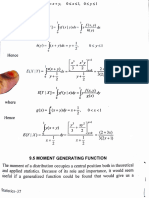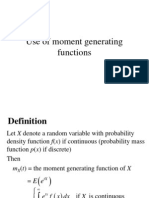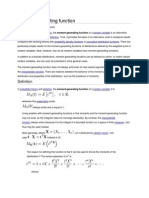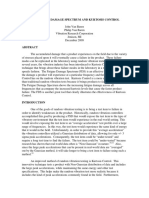0% found this document useful (0 votes)
41 views13 pages8 Generation Functions
The document discusses moments and moment generating functions of random variables. It defines moments such as mean, variance, skewness and kurtosis. It then explains moment generating functions and how they can be used to find moments. It provides examples of calculating moment generating functions and using them.
Uploaded by
rsmyrsmy14Copyright
© © All Rights Reserved
We take content rights seriously. If you suspect this is your content, claim it here.
Available Formats
Download as PDF, TXT or read online on Scribd
0% found this document useful (0 votes)
41 views13 pages8 Generation Functions
The document discusses moments and moment generating functions of random variables. It defines moments such as mean, variance, skewness and kurtosis. It then explains moment generating functions and how they can be used to find moments. It provides examples of calculating moment generating functions and using them.
Uploaded by
rsmyrsmy14Copyright
© © All Rights Reserved
We take content rights seriously. If you suspect this is your content, claim it here.
Available Formats
Download as PDF, TXT or read online on Scribd
/ 13























































































